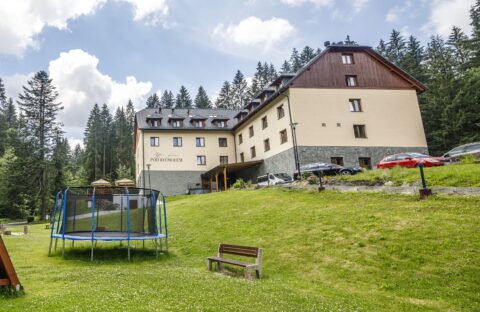- ubytování s wellness přímo v srdci Beskyd
- rodinný hotel
- pokoje pro páry
- pokoje a apartmány až pro pětičlenné rodiny
- špičková gastronomie a celodenní provoz restaurace – snídaně, obědy, večeře
- vlastní minipivovar
- krytý bazén s vyhřívanou vodou
- vířivka
- saunový svět – finská sauna, bio sauna, parní sauna
- Kneippův chodník
- solárium
- bowling
- vyhřívaná lyžárna, kolárna
- několik minut od dvou ski areálů
- dětské hřiště, dětský koutek s promítáním pohádek
- klidné místo obklopené přírodou, na dosah všech krás Beskyd
- pestrá nabídka zvýhodněných pobytových balíčků dovolených
- v nabídce i rodinné pobytové balíčky
Rodinné oslavy a firemní akce
Moderní vybavení Wellness hotelu Pod Kyčmolem v Beskydech vám nabízí nejen nadstandardní ubytování v dvoulůžkových, třílůžkových a rodinných pokojích či apartmánech s možností přistýlky, ale i možnost pronájmu prostor po vaše soukromé a firemní akce. Je vhodným místem pro oslavy, svatby či obchodní jednání, kongresy, semináře i přednášky.



